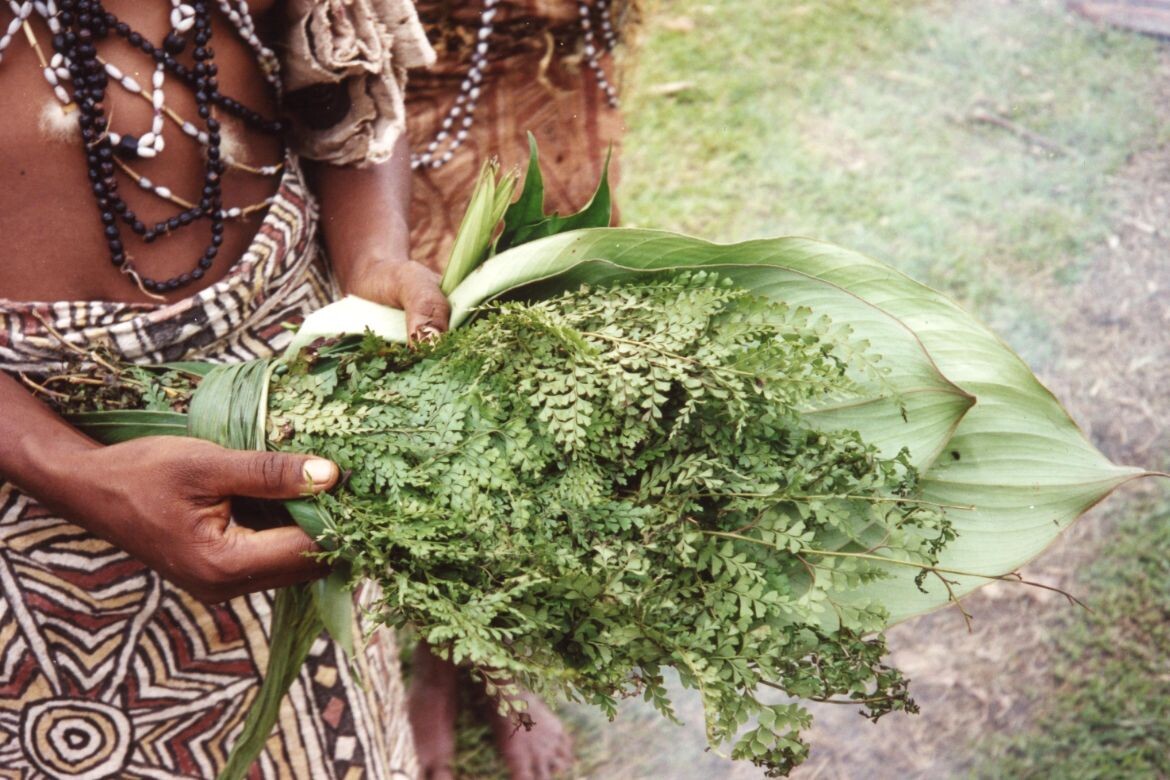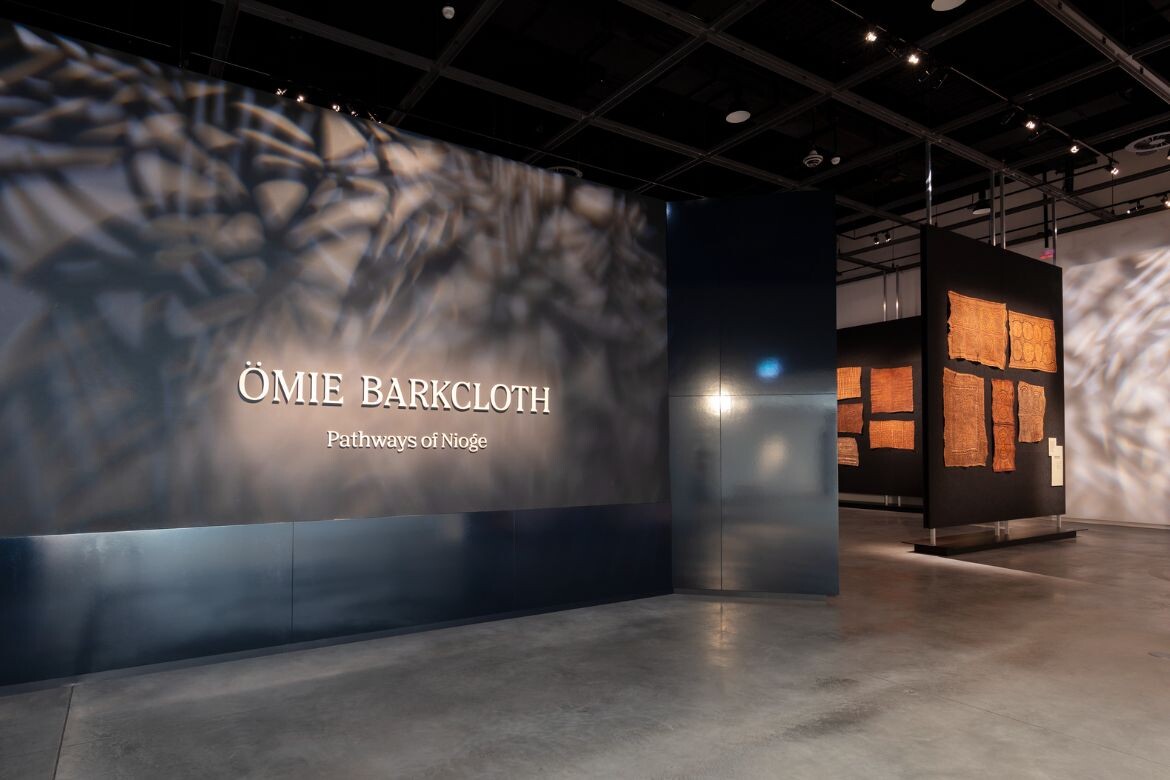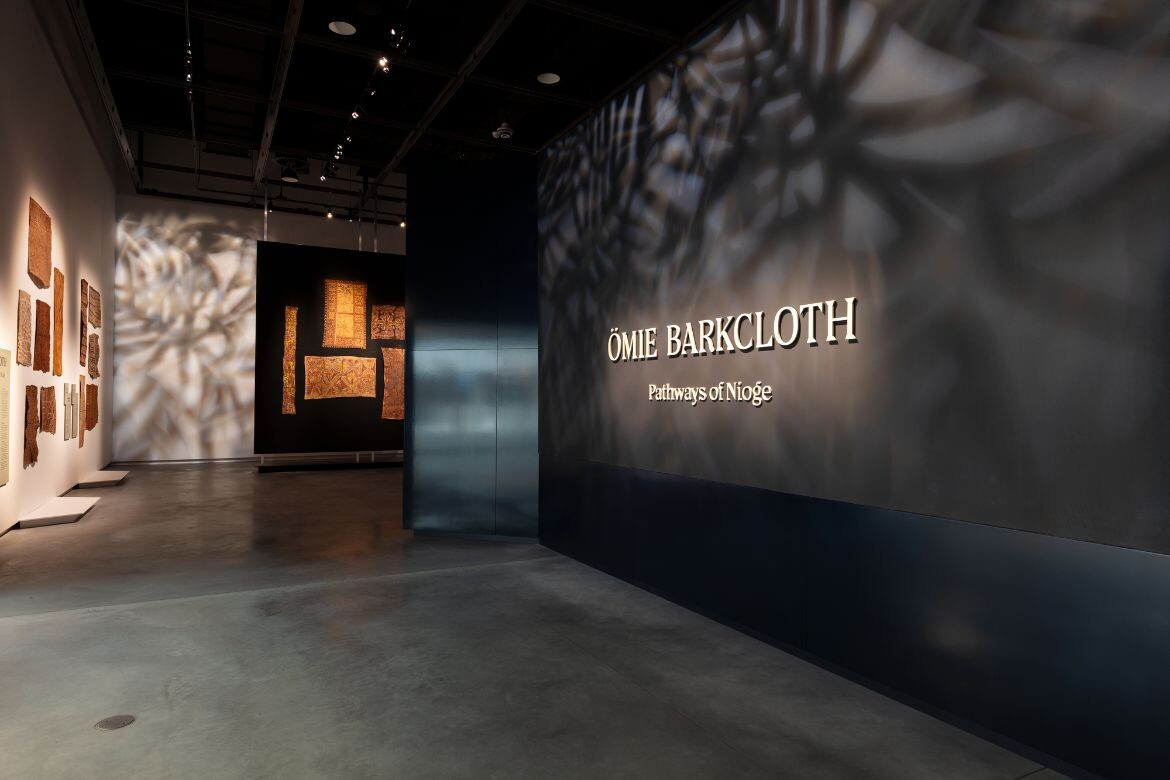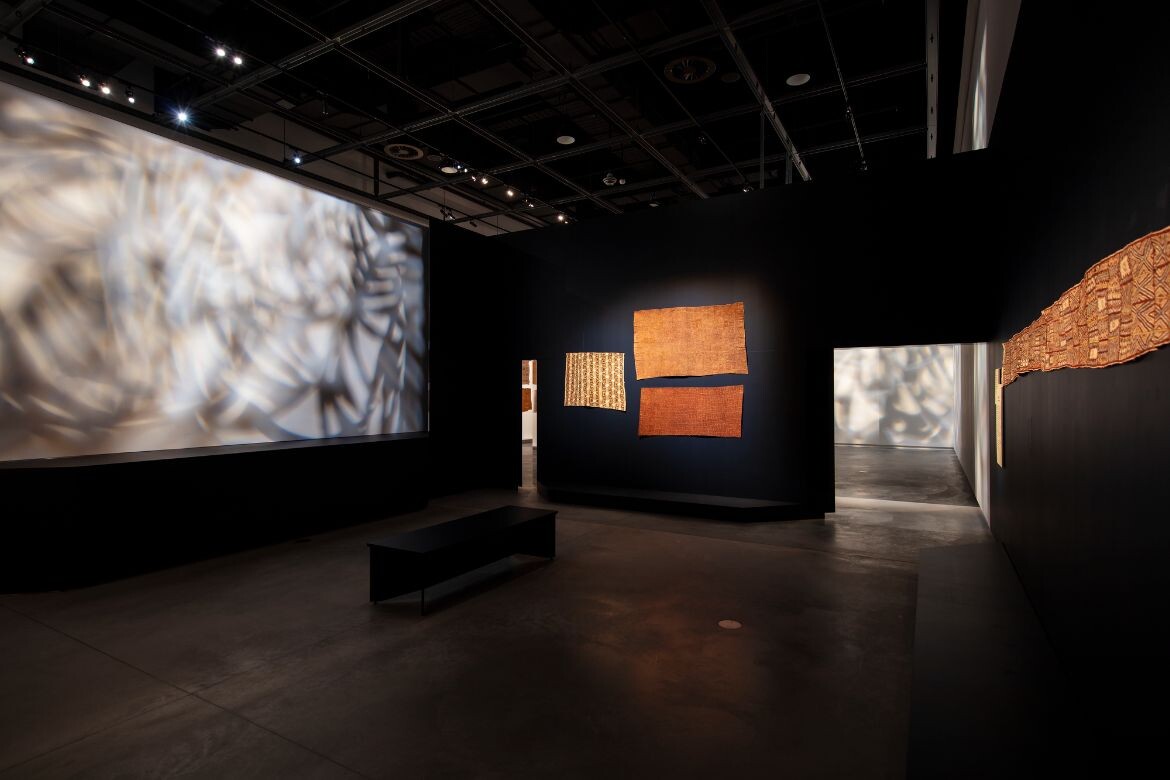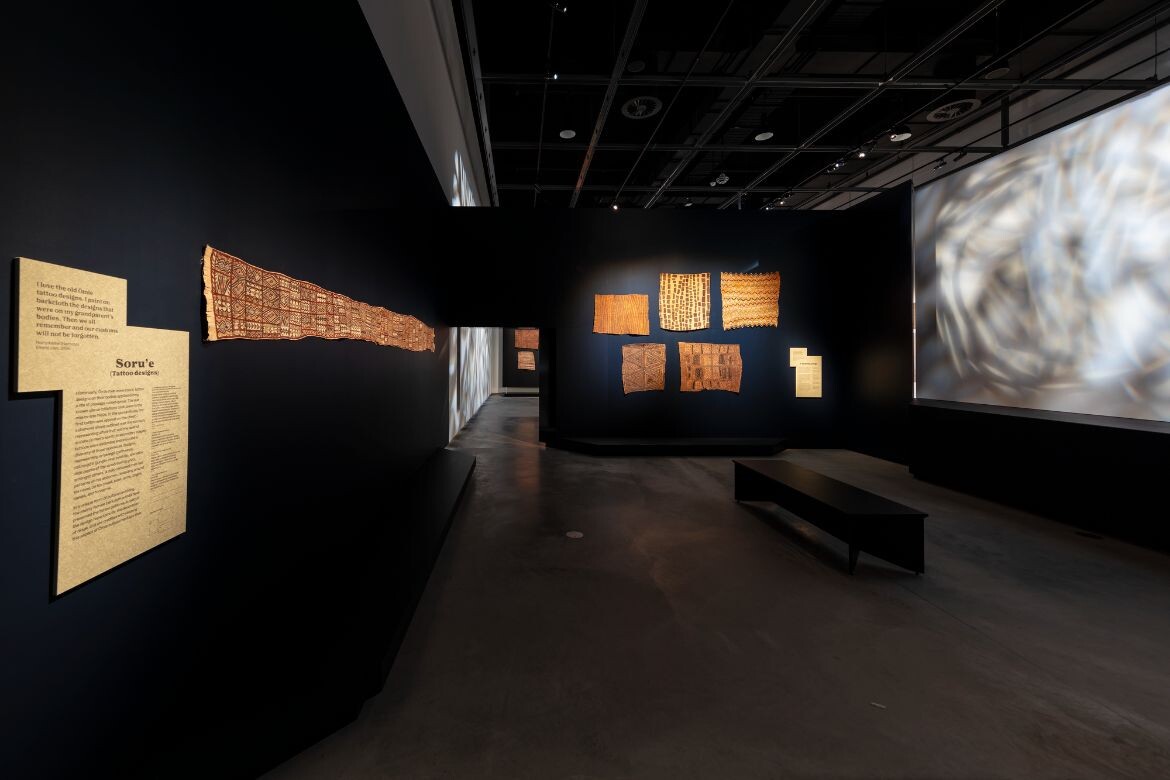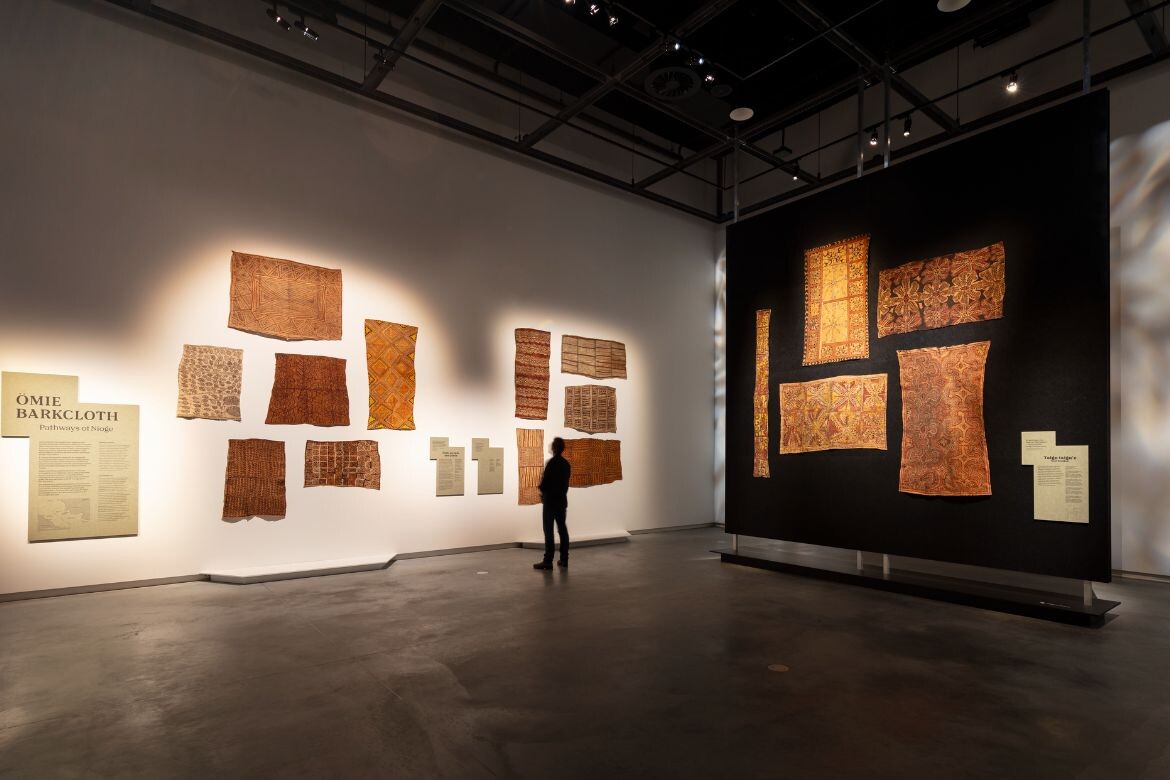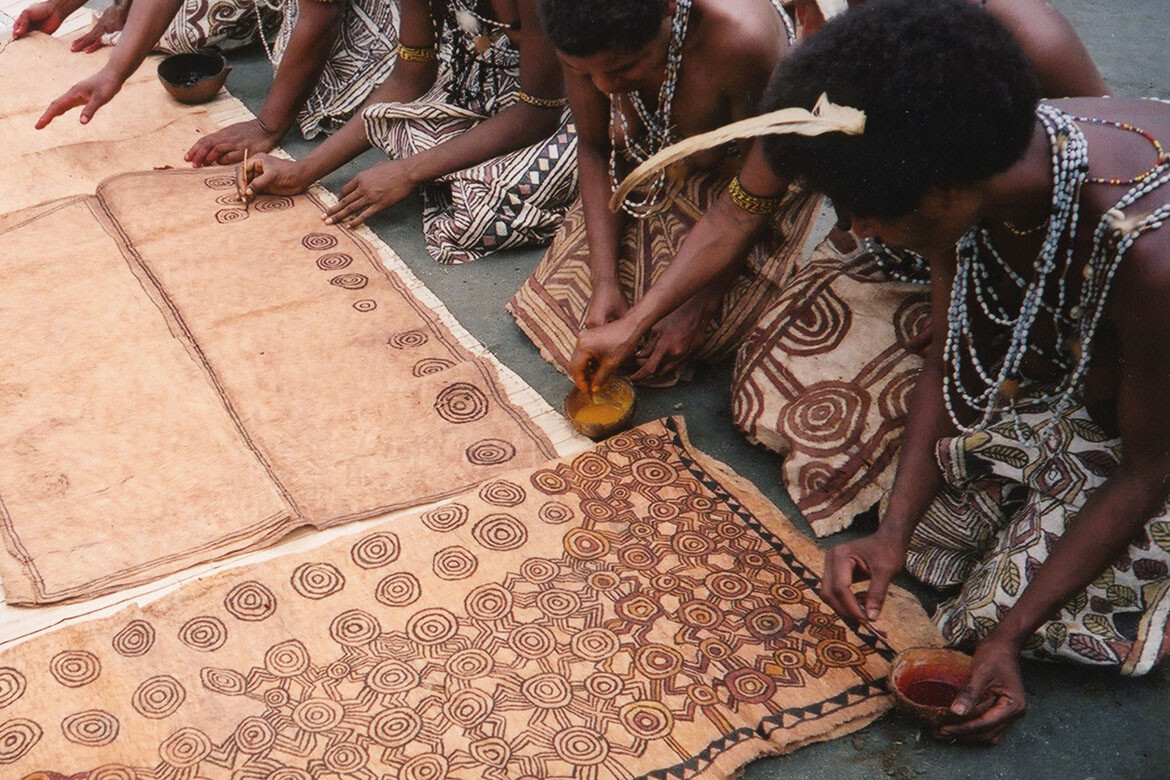On now at the Chau Chak Wing Museum is Ömie barkcloth: Pathways of nioge, which showcases the incredible skill of women from Papua New Guinea.
“The barkcloths are individually beautiful, stunning en masse, and it’s great to see the work of so many named female artists from PNG recognised. The show particularly highlights early work, from the start of the movement to market Ömie nioge to the wider world,” says Chau Chak Wing Museum (CCWM) Ethnography Curator Rebecca Conway.
Ömie barkcloth: Pathways of nioge presents one of the largest public collections of stylistically vibrant contemporary barkcloth art made by the Ömie people of Northern (Oro) Province, PNG. The exhibition features the work of 35 artists who each produce the cloth as well as source and make pigments from local rainforest resources. Following the traditional method, Barkcloth is painted with strong graphic black outlines, which the artists identify as eseegé (pathways), these are then in-filled with earthy and bright natural colours.
Continuing the artistic style and process that has belonged to the people of Ömie for thousands of years, the work in the current exhibition was made between 2002 and 2016, a period which saw an international market for the artworks flourish.
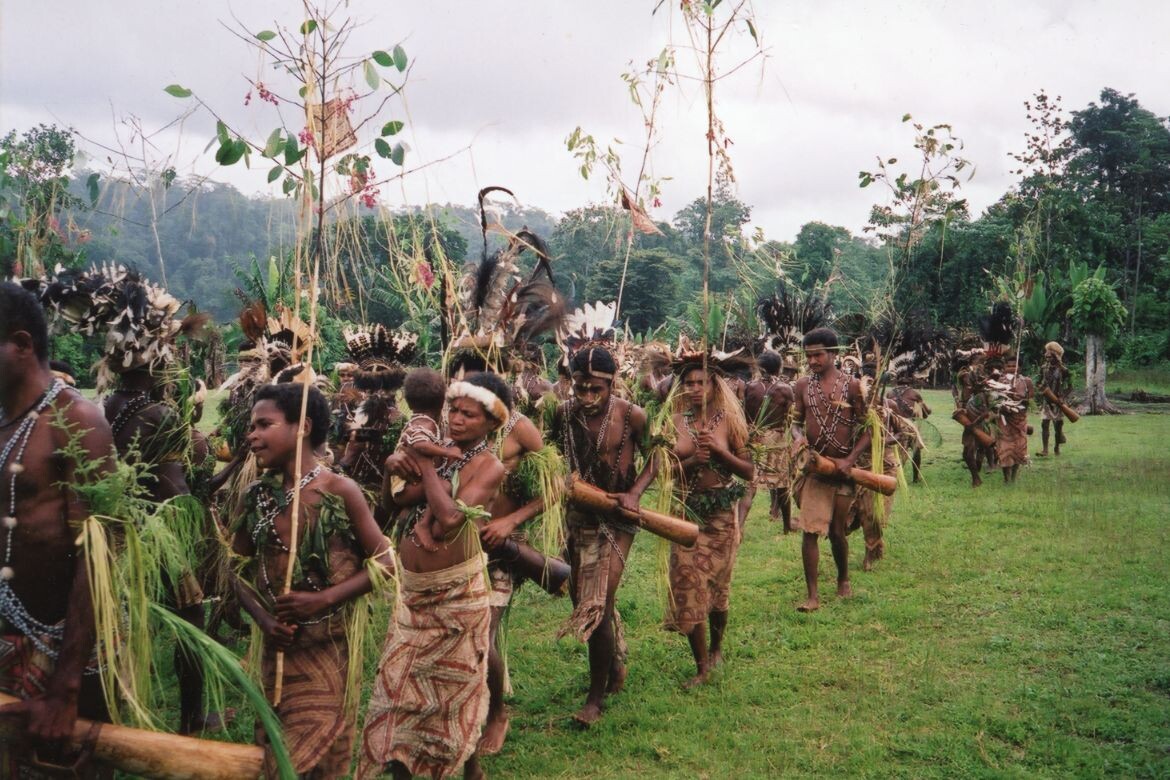
In 2002, Ömie makers began discussions with Australian art dealer David Baker and in 2004 he returned with Australian writer Drusilla Modjeska. This marked the beginnings of an artists’ cooperative, Ömie Nemiss Inc. (now called Ömie Artists Inc.) and an international market for Ömie artists.
Galleries throughout Australia including Annandale Galleries, NGV, Goma, Cairns, Redlands and Trinity have been strong supporters, each hosting exceptional exhibitions. America has also promoted the work with major exhibitions presented at the Fowler Museum, UCLA and the de young in San Fransisco.
“Meeting with Ömie women was a profound learning experience,” said Modjeska, who drew on her time with Ömie artists when writing The Mountain, a novel shortlisted for the 2013 Miles Franklin Literary Award. “On the gallery walls in Sydney, their nioge (barkcloth) can hang as contemporary art. Yet, even in this radically different context, they resonate with the poetry of their sacred mountain, Huvaimo, and the vastness of Ömie wisdom,” she says.
Many of the works featured in Ömie Barkcloth were part of the private collection of David Baker (d.2009), gifted to the museum from his estate via fellow Pacific-arts collector and dealer, Todd Barlin some years later.
Chau Chak Wing Museum
sydney.edu.au/museum/
Ian Potter Gallery, Chau Chak Wing Museum, University Place, University of Sydney
